Highway tree management: operations note 51
Published 19 July 2019
Applies to England
Date: 19 July 2019
1. Purpose
Good Practice in Practice: Examples of good practice tree and highway management with respect to trees growing within the curtilage of the highway.
2. Introduction
Street trees are a recent introduction in England (‘The Barriers and Drivers to Planting and Retaining Urban Trees’, The BTP Working Group, 2013). Prior to the 19th century there were relativity few trees that were either planted or allowed to grow within the curtilage of the highway. For the purposes of The Highways Act 1980, the ‘highway’ is defined not just as the carriageway (the road surface), but the adjacent footway running from the kerb edge all the way to the back edge of the pavement area. It also includes footpaths and public rights of way maintained at public expense. Trees growing in the highway are usually the responsibility of the local highway authority and are managed and maintained just like any other element of highway infrastructure that requires maintenance or replacement from time to time: lamp columns, bollards, kerb edging, pavement blocks, signage etc.
However, unlike other highway infrastructure trees do not remain static, they grow, enlarge over time both above and below ground. They shed leaves and branches and in some situations may fall over presenting a hazard to users of the highway. This growth and life cycle which may be perfectly benign in a natural setting is problematic when the tree interacts with the built infrastructure around it in a highway setting. Trees can cause maintenance issues for kerbs, footway paving, carriageway surfaces, adjacent shallowly founded structures (direct damage caused by the physical expansion of buttress roots, underground roots or trunk growth with sufficient force to deflect or deform built structures immediately adjacent) and in certain conditions damage building foundations as well, when growing in a shrinkable clay soil (indirect damage caused by the trees’ water uptake creating a persistent soil moisture deficit in shrinkable clay soils such that the clay shrinks thereby reducing the load bearing capacity of the soil and the foundation subsides) . Despite all these issues highway trees are a critical element in the overall canopy cover of the urban forest within towns and cities in England (‘Trees in Towns II. A new survey of urban trees in England and their condition and management’ Chris Britt and Mark Johnston, DCLG, 2008 and ‘Canopy Cover of England’s Towns and Cities: baselining and setting targets to improve human health and well being’, Doick et al. Forest Research 2017). As such they make a significant contribution in respect of visual amenity (The London Tree Survey, 1994) and the many aspects of ecosystem services they provide to people in towns and cities. Larger landscape scale trees provide the greatest overall benefits (Delivery of Ecosystem Services by Urban Forests. Research Report Forest Research 2017).
3. Engineered Highway Solutions
Unfortunately it is often the larger trees, if not adequately maintained in the highway context, which may cause the most issues for the built infrastructure in their immediate vicinity. However, there are a range of engineering and maintenance solutions that can easily be applied throughout any trees’ lifecycle that allow both the tree and the highway to mutually co-exist, each providing the benefits to society that are implicitly valued by residents and businesses in towns and cities; safe, usable highways and a high quality well managed and maintained urban forest. Some examples, not exhaustive, are: * Use of flexible tree pit sizes, rather than relying on a small range of pre-specified dimensions. * Use of narrow kerb profiles to accommodate flare and buttress roots. * Dispensing with kerb edging when possible in appropriate streets. * Use of bonded gravel in the tree pit to provide an inclusively accessible surface. * Use of tarmac inserts around the base of trees where the footway surface has become deformed due to root growth. * Use of flexible rubber crumb along pavements and as inserts where previously tarmac or paving has been deformed due to root growth. * Integrating tree pit locations into parking bays as kerbside buildouts. * Creating kerbside buildouts to accommodate tree growth or redirect pedestrian footfall.
Appendix 1 also shows some example photographs.
4. Tree Maintenance Solutions
- Root pruning of non-structural surface roots to accommodate the laying of new paving, tarmac inserts, rubber crumb surfacing.
- Root pruning of non-structural roots to accommodate relaying of kerb edging.
- Placing barriers around trees to discourage parking on verges.
- Regular pruning of the tree to control its water uptake and limit its root and trunk annual incremental expansion.
All of the above solutions will require the co-ordinated response and guidance of an experienced and qualified Arboriculturist working closely with an experienced Highway Engineer. Some, such as the rubber crumb surfacing bring multi-purpose benefits in that larger areas of rubber crumb surfacing can act as a Sustainable Urban Drainage (SUD) element within the footway, by desynchronising flash flooding and providing additional available water to the tree itself. Where there is potential for direct infrastructure damage as well as indirect foundation damage, the need for regular pruning of highway trees in particular can be difficult to justify to residents and incurs a cost. However, tree management and maintenance is a
long term management activity and many tree managers take the view that when necessary it is better to retain a large species, large landscape tree and its root system in situ, but maintained at a reduced size. This is done in the expectation that at some future date (possibly years hence) due either to; a technical innovation that solves the issue of building subsidence, a change in climatic factors (increased winter rainfall rehydrating the soil sufficiently annually) or a cultural shift that means property owners tolerate minor cracking (as was the case prior to 1971 before mortgage lenders and insurers covered subsidence as an insured risk) the trees could be allowed again, to redevelop their larger canopies quickly if the worst case scenarios for climate change were realised in the 2050’s to 2080’s. Thereby providing a quick response to the need for increased canopy cover, restoring them at just the moment in time when they will be needed most and without the time lag and challenge of replanting from scratch (Hand, K.L., Doick, K.J. (2019). ‘Understanding the role of urban tree management practices on ecosystem service delivery by urban forests’. Forestry Commission Research Report, In Press. Forestry Commission, Edinburgh).
There is a wealth of technical advice and information available across the relevant sectors that provide practical and comparatively low cost methods of achieving the objective of permitting highly valued trees to exist within a well maintained and modern inclusive highway (BS 3998 2010 Tree Work-Recommendations; BS 5837 2012 Trees in Relation to design, demolition and construction-Recommendations; Tree Roots in the Built Environment Research for Amenity trees No.8, 2006. Centre for Ecology and Hydrology; Manual for Streets 2, Wider Application of the Principals, 2010. The Chartered Institute of Highways and Transportation; A Risk Limitation Strategy for Tree Root Claims, 2009. The London Tree Officer’s Association; National Joint Utilities Group Volume 4, 2007, Guidelines for the planning, installation, repair and maintenance of utility services in proximity to trees; Subsidence of Low Rise Buildings. 2000, The Institution of Structural Engineers. 16 The benefits of large species trees in urban landscapes: a costing, design and management guide 2013. CIRIA).
These solutions will require effective communication to local authority Members and Managers as well as local residents as to why they are suitable and necessary for achieving good highway tree management practice. They will also need articulating in carefully crafted tree and highway management policies and strategies so they can be hardwired into the mechanisms local authorities use to cost and deliver their services and infrastructure maintenance programmes.
5. Sources of further advice
Jim C. Smith – Urban Forestry Adviser Forestry Commission (jim.c.smith@forestrycommission.gov.uk)
6. Versions
Version 1 issued 19 July 2019
7. Annex 1 – Engineering alternatives to tree felling
- Flexible pit size with rubber crumb surfacing wide pavement
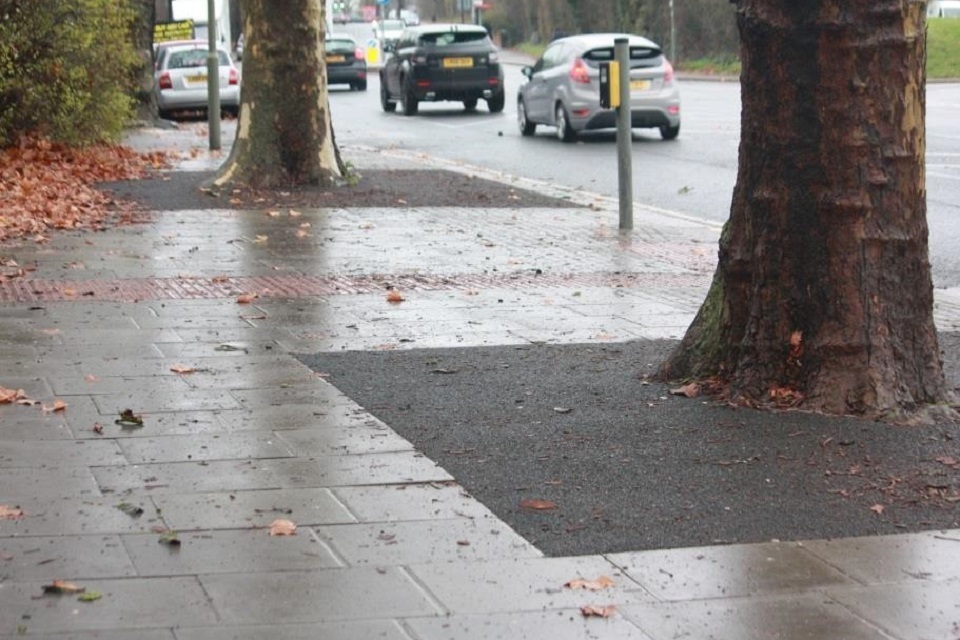
Flexible pit size with rubber crumb surfacing wide pavement.
- Flexible pit size with rubber crumb insert narrow pavement
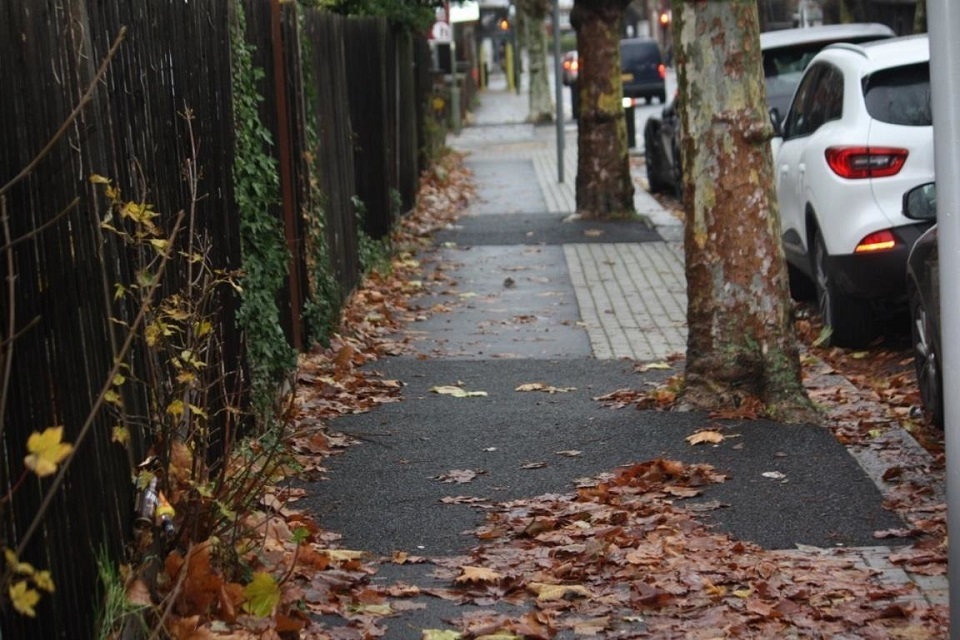
Flexible pit size with rubber crumb insert narrow pavement.
- Narrow kerb profile with flexible pit size and tarmac insert.

Narrow kerb profile with flexible pit size and tarmac insert.
- Dispensing with kerb edging
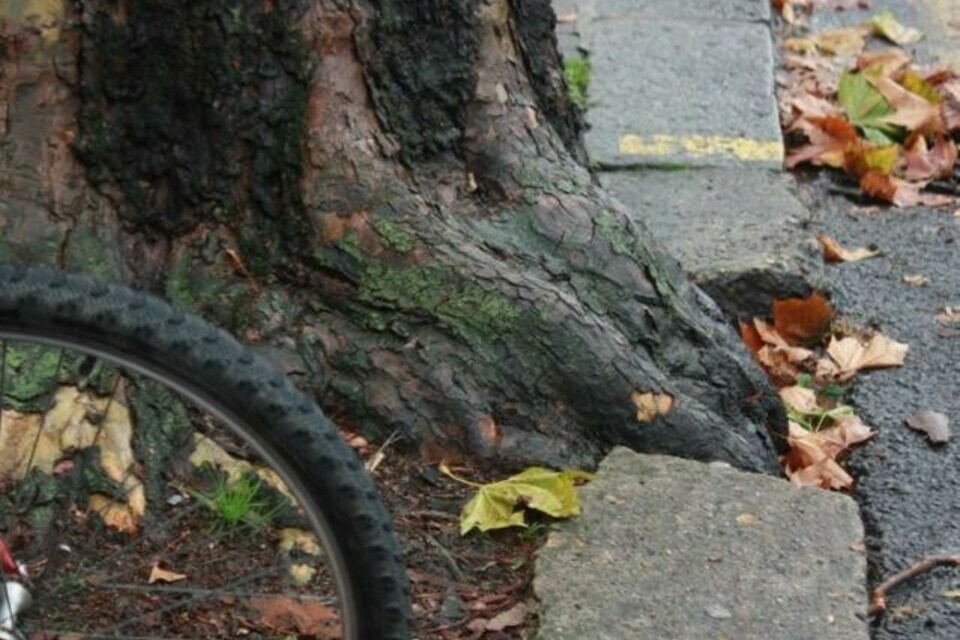
No kerb edging.
- Use of tarmac insert to replace deformed paving (includes narrow kerb profile)
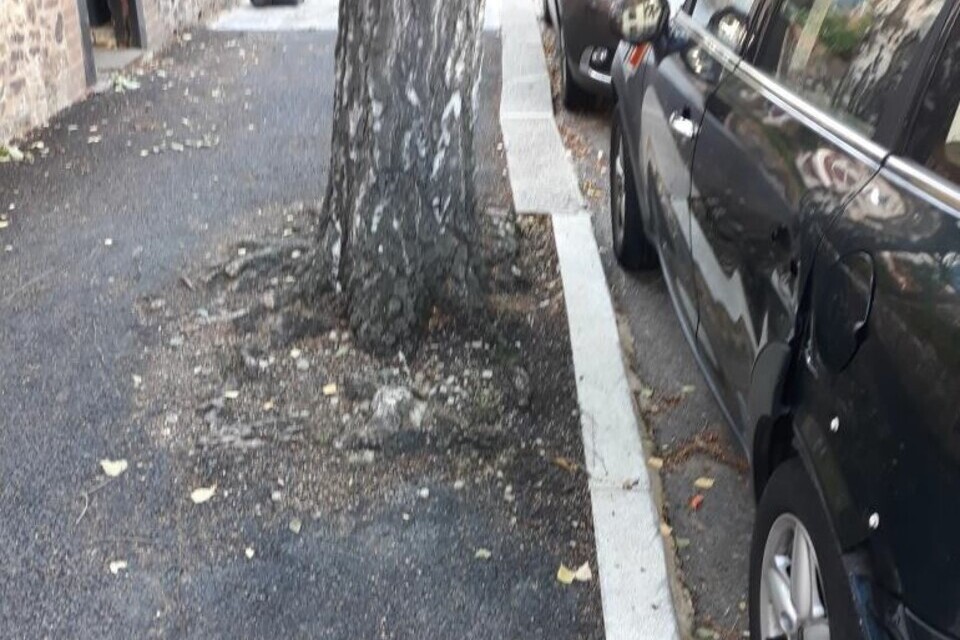
Tarmac insert replacing deformed paving.
- Integrating tree pits into parking bays as kerbside buildouts (x2)

Tree pits in parking bays

Tree pits in parking bays
- kerbside buildout example
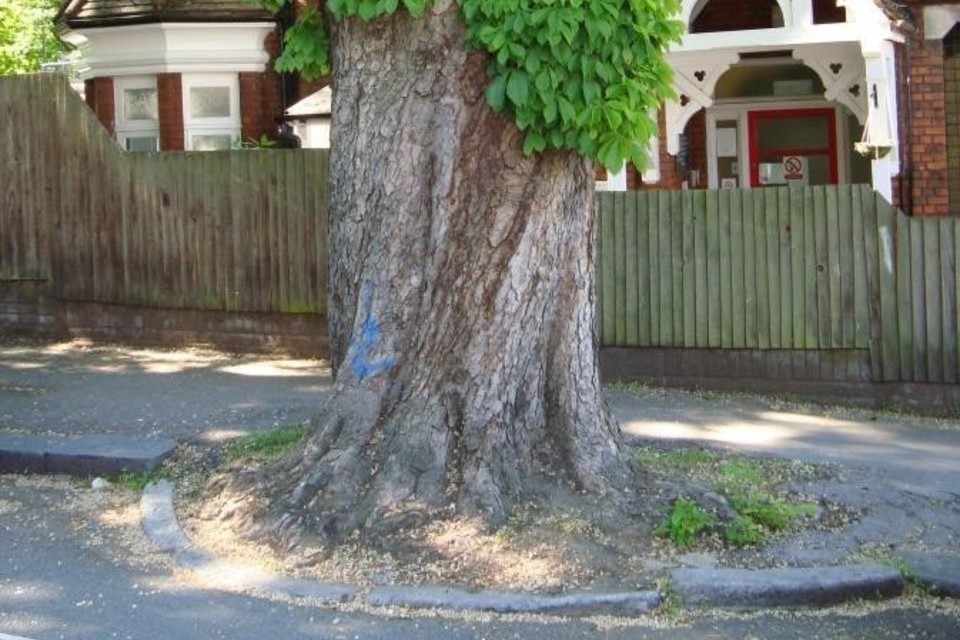
Kerbside buildout
- Creating a kerbside buildout to redirect pedestrian footfall where a tree reduces access, with integrated cycle path.
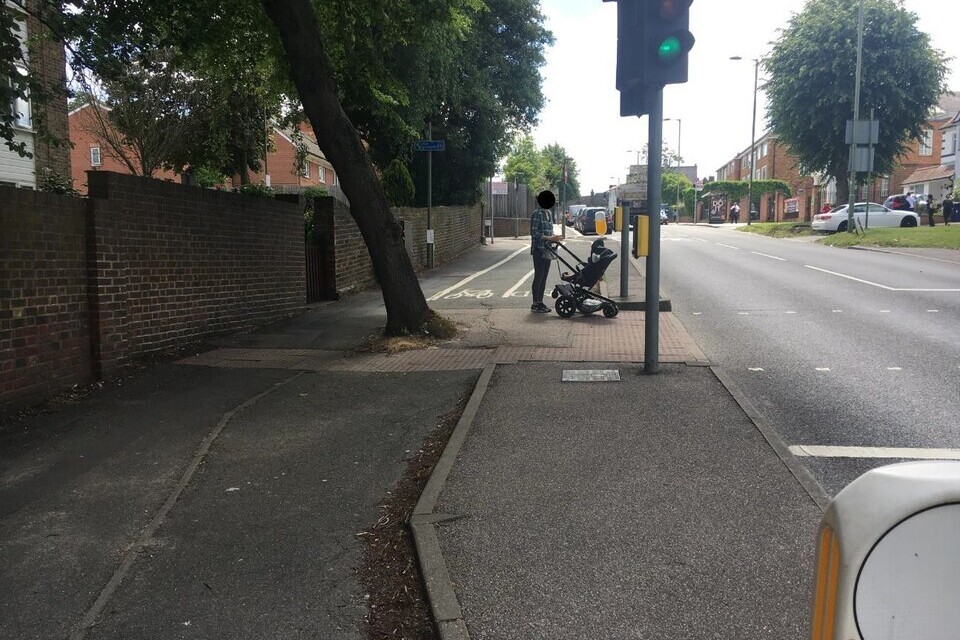
Kerbside buildout redirecting pedestrian footfall
- Placing a barrier around a tree to discourage car parking that damages verges.

Barrier around a tree
- Regular pruning of large trees to retain them and their root systems in situ as an insurance policy against the expected impacts of future climate change.

Pruned large trees

